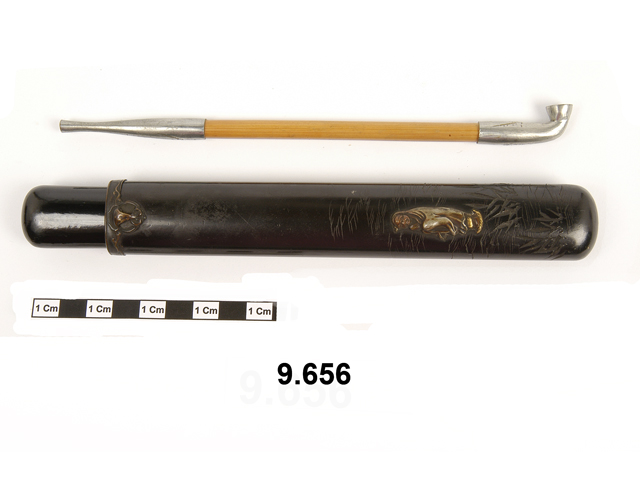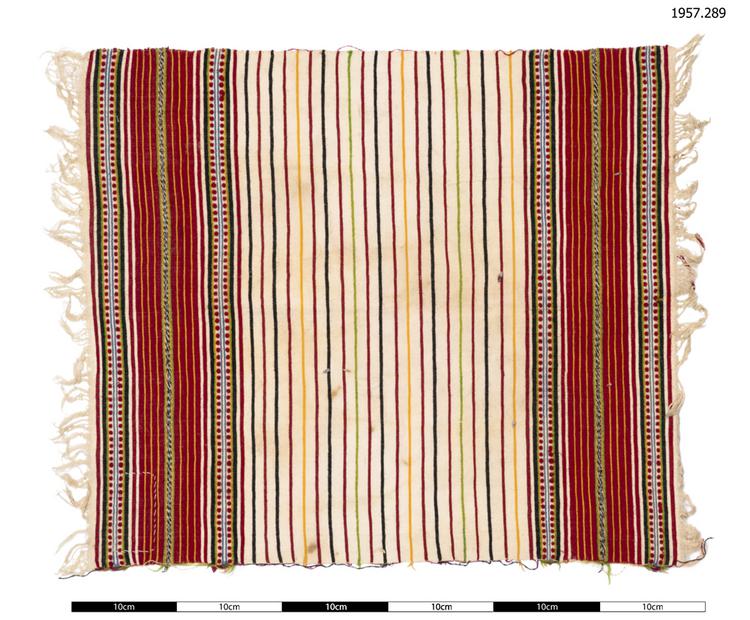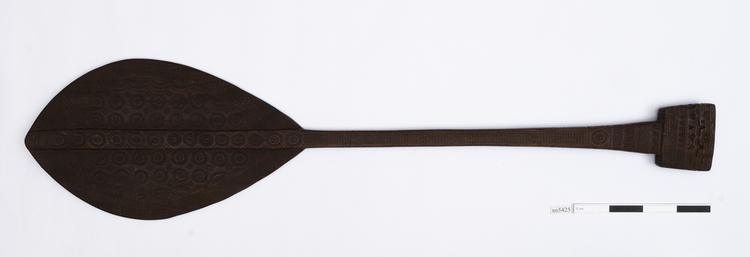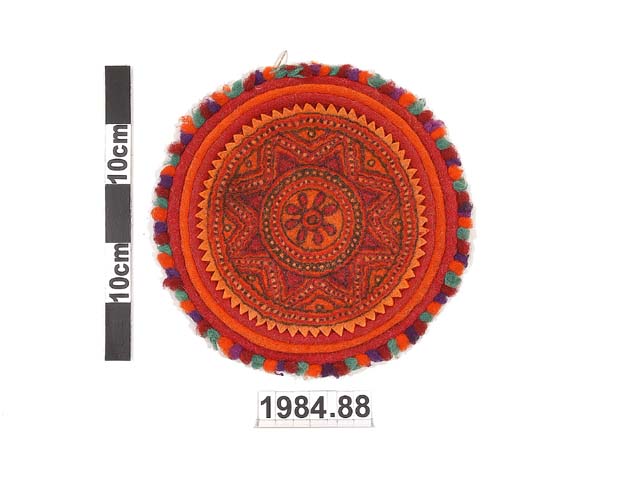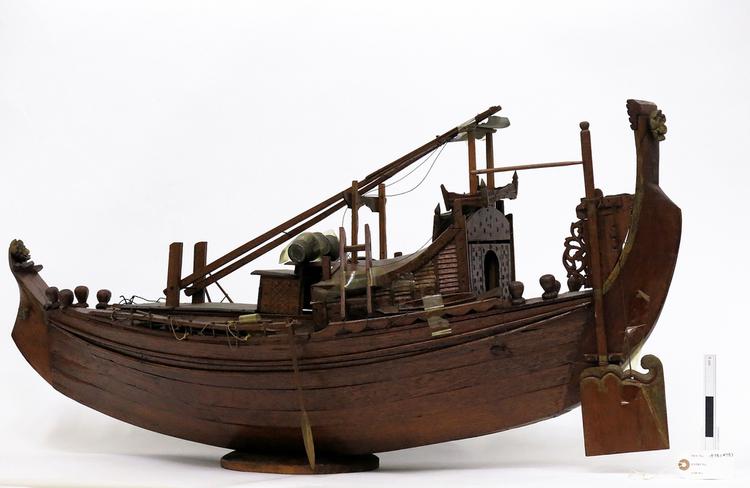
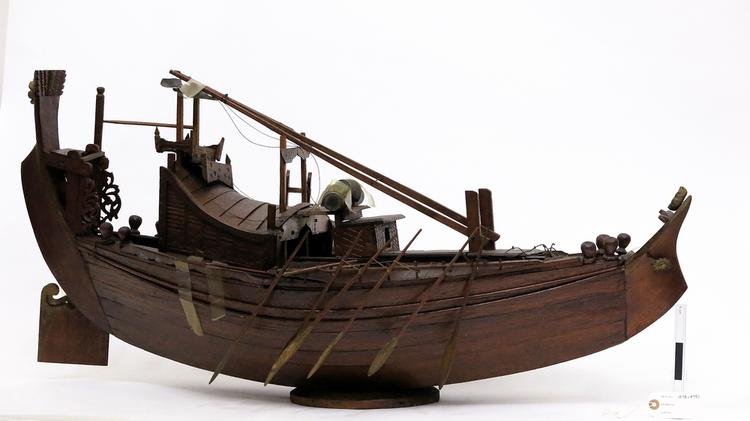
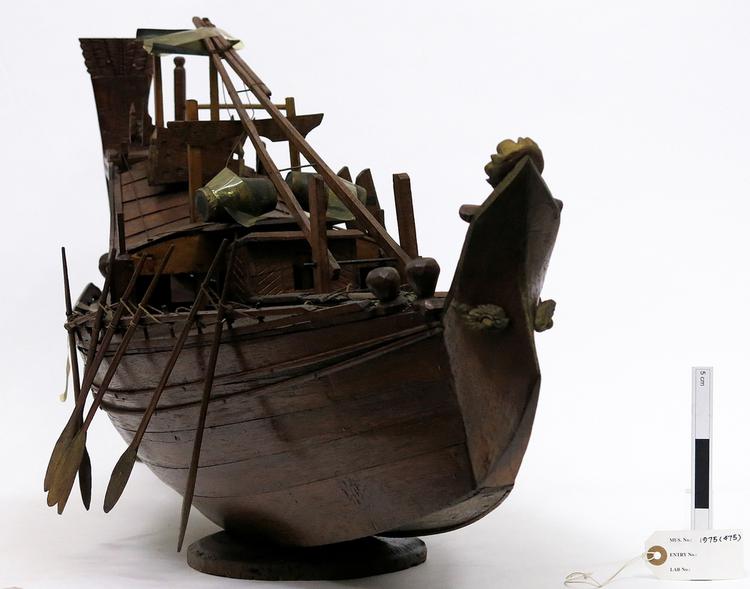
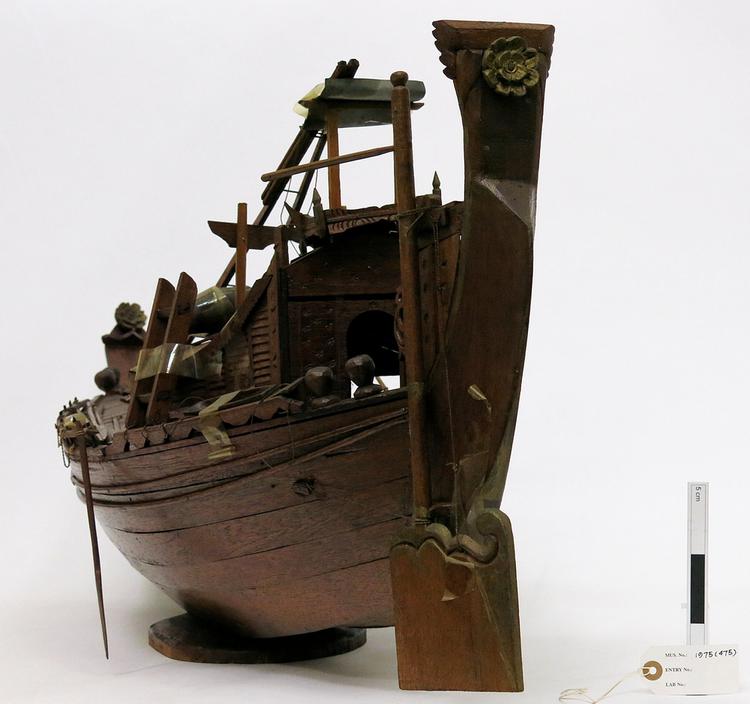
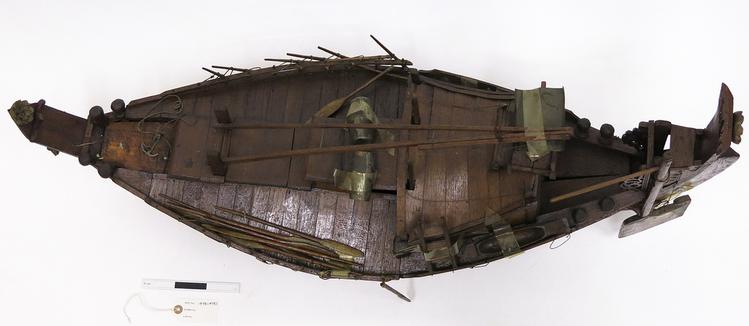
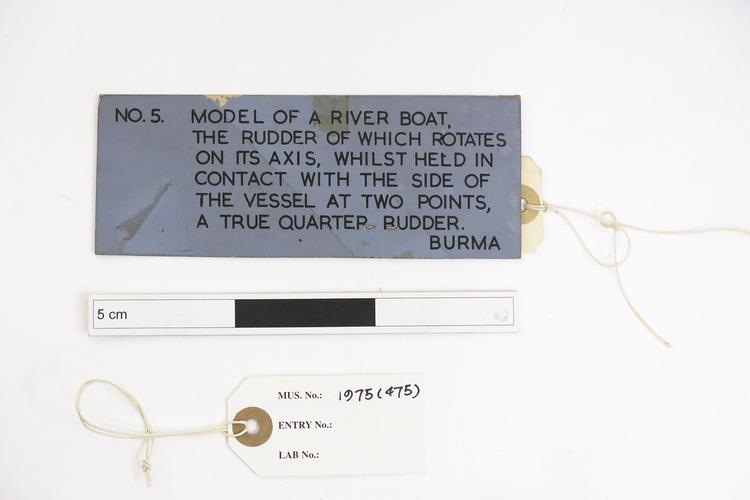
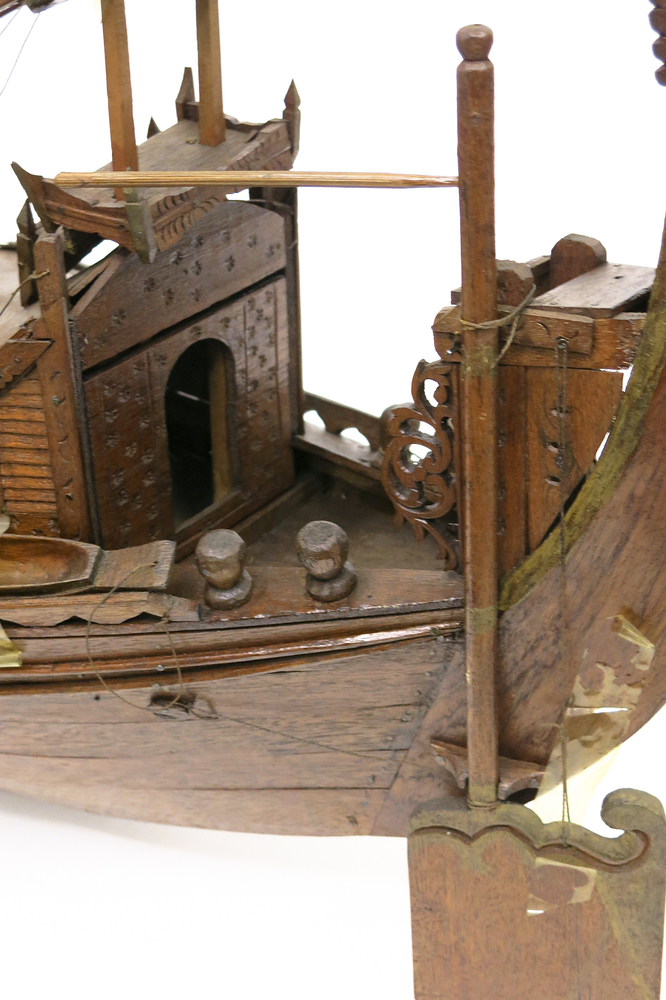
Model laung-zat, a boat used to transport rice on the Irrawaddy River in Myanmar (Burma). The model has a curved carvel (flush laid) planked hull, raised at the bow and stern, with a pointed stem piece and elaborately carved and decorated stern with a quarter rudder. The model contains a bipod mast, several oars, and an enclosed wooden structure with a roof and decking.
The old type of laung-zat, as represented by this model, were seen in Myanmar until at least World War II, the modern laung-zats are double-ended and low at the bow and stern (Parry, 2000: 348). See: Parry, H. & Museum, M., 2000. A dictionary of the world's watercraft from Aak to Zumbra: Chatham pp.348




